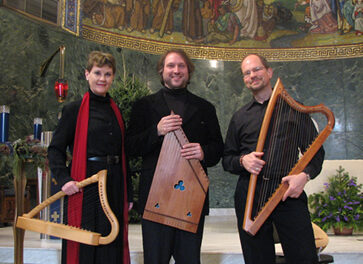Let’s see now, there was Berj Zamkochian with Munch and the Boston Symphony on RCA Victor’s “Living Stereo” label. Or maybe it was E. Power Biggs with Ormandy and the Philadelphia Orchestra on Columbia Masterworks’ “Stereo 360 Sound” version. Anyway, it was a pretty good bet that one of these releases of the Saint-Saëns Symphony No. 3 (The Organ Symphony) would be employed by early audiophiles to demonstrate the awesome sonic qualities of their “hi-fi stereos.” My Klipschorns are better than your Altecs!
These combatants should have been at Meredith College’s Jones Auditorium on an unseasonably warm February evening. There after intermission they would have heard David Lynch with Jim Waddelow and the Raleigh Symphony Orchestra in a “live” version of this old standby, one fit to serve as a benchmark for their audio systems. Lynch, former long time head of the Meredith music department and one of the area’s premier organists, always seemed to come in with just the right balance to be prominent but not overwhelming the other players. After what seemed like a tentative beginning, the orchestra members came alive in the second of the two movements, negotiating the complexities with authority and precision.
Opening the evening was the “Hungarian March” from The Damnation of Faust. This piece (usually called the Rákóczy March) is another one that was used years ago for sound demonstrations. These RSO players continue to amaze. One scarcely ever hears this march played with finer sound.
The three movements of Serenade for Strings in E minor, Op. 20 by Elgar came through with a simple and tranquil quality. This work starts with a movement, the name of which at least one listener had never encountered: Allegro piacevole. Sure enough, piacevole means agreeable, or as the program notes point out, pleasant.
Music Director Waddelow led up to intermission with a most electrifying reading of Rossini’s “Italian Girl in Algiers.” The fine program notes pointed out this work’s “quiet beginning punctuated with a surprisingly loud chord” in apparent honor of Haydn and his “Surprise” Symphony. Waddelow’s players here were more “surprising” than the great Haydn ever managed.
This was a varied program with a major work seldom programmed. The appreciative audience was well served musically, educationally, and sonically.











